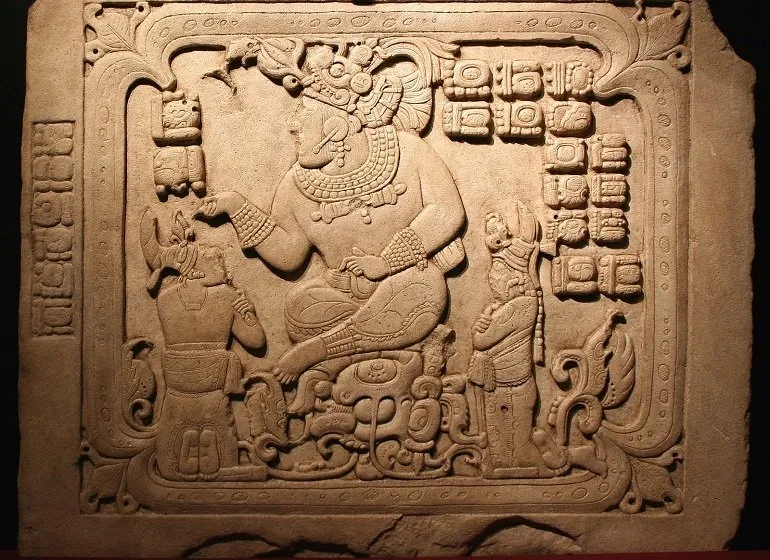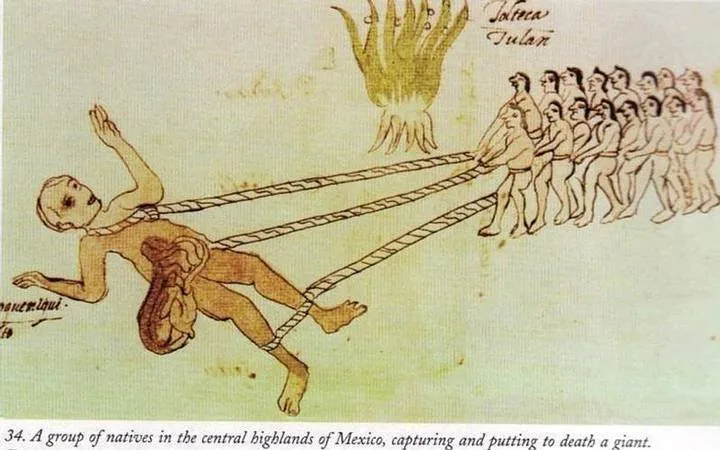ADSactly Folklore: When Giants Roamed the Earth (Part4)
Hello again, dear @adsactly readers! Our series dedicated to the mythical creatures known as Giants could not be considered complete without a look at the Mesoamerican legends on this subject, which are in many ways very similar to Classical Greek and Roman mythology, as well as Norse mythology, which is most surprising considering they evolved thousands of miles apart.
The most relevant stories about the ancient Mesoamerican beliefs in extraordinary beings of great stature come from Aztec mythology. The stories about the Giants that populated the territory of present-day Mexico, belonging to a race called quinametzin, were collected mainly in the chronicles of the Spanish evangelical missionaries and historians sent to the newly conquered lands. The word quinametzin is the plural of quinametli and it was translated into Spanish as Gigante. At the same time, the term was used to describe the first inhabitants of Mexico. Some stories describe the quinametzin as being 10 feet tall (3 meters) and weighing about 650 pounds (almost 300 kilograms).
In Aztec mythology, the present world was preceded by four other cycles of creation and destruction. In Aztec cosmogony, the first god, Ometeotl,created itself and was both male and female, light and darkness, judgment and forgiveness. Ometeotl gave birth to four children, the four Tezcatlipocas, who each preside over one of the four cardinal directions.They created the other gods, the world and its first inhabitants, described as a race of giants, the quinametzin.
The central figure of the fourth era (the fourth sun, also called the Sun of Rain) was the water goddess Chalchiuhtlicue, accused by one of the Tezcatlipocas of being vain and selfish. The goddess was so hurt by his words that she cried blood for the next fifty-two years, causing the terrible flood that drowned everyone on Earth. Humans became fish in order to survive.
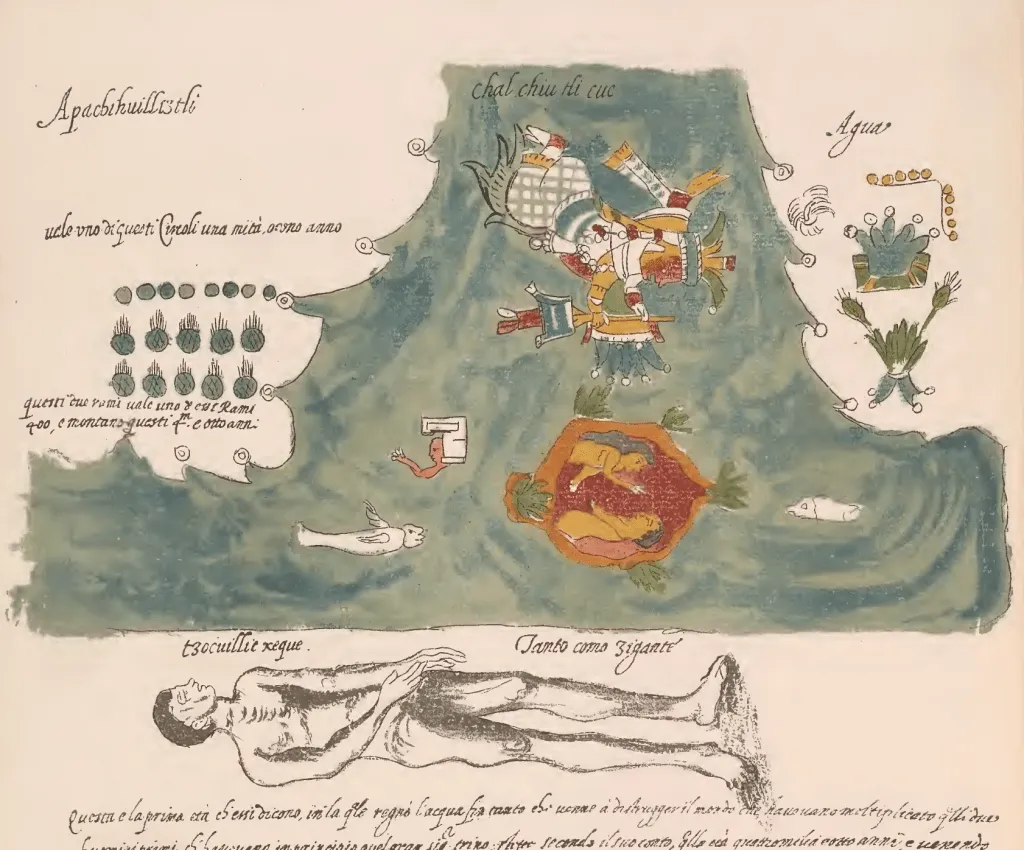
A tzocuillicxeque giant buried underneath a representation of the Water Sun.
source
The Codex Zumarraga explains that for the indigenous people, the giants perished in the catastrophe of Atonatiuh. According to legend, the flood took place in the mountainous area of Tlaxcala. This obviously reminds us of the Greek and Norse mythologies, which also mention that the giants were created at the beginning of time. In our previous post dedicated to the Biblical giants we encountered the same belief that the mythical race of giants was destroyed by God in the Great Flood.
Codex Zumarraga refers to the manuscripts written during the time when Don Juan de Zumarraga (1468-1548) was Bishop of Mexico, although unfortunately the same cleric is considered responsible for the destruction of many pre-Conquest codices and artifacts. According to this Codex, the Giants angered the gods because they refused to venerate them, so they were punished for their sins.
Native American credited the ancient race of the quinametzin with building the Great Pyramid of Choula, situated in Puebla, Mexico. The pyramid, which stands 55 metres tall is the largest pyramid that still exists today, being even bigger than the much more famous Egyptian pyramids. Archaeologists have established the pyramid of Choula was built over a period of more than 1000 years, between the 3rd century BC and the 9th century AD. If it was indeed built or at least started by the quinametzin, this does not sit well with the theory that the Giants were destroyed in a flood, as there are no scientific data to prove a catastrophe of such magnitude had occurred in such recent times.
Unfortunately, not much is known about the Great Pyramid of Choula, as excavations are not permitted in the area, which also houses a church built by the Spanish conquistadors, protected as a historical monument.
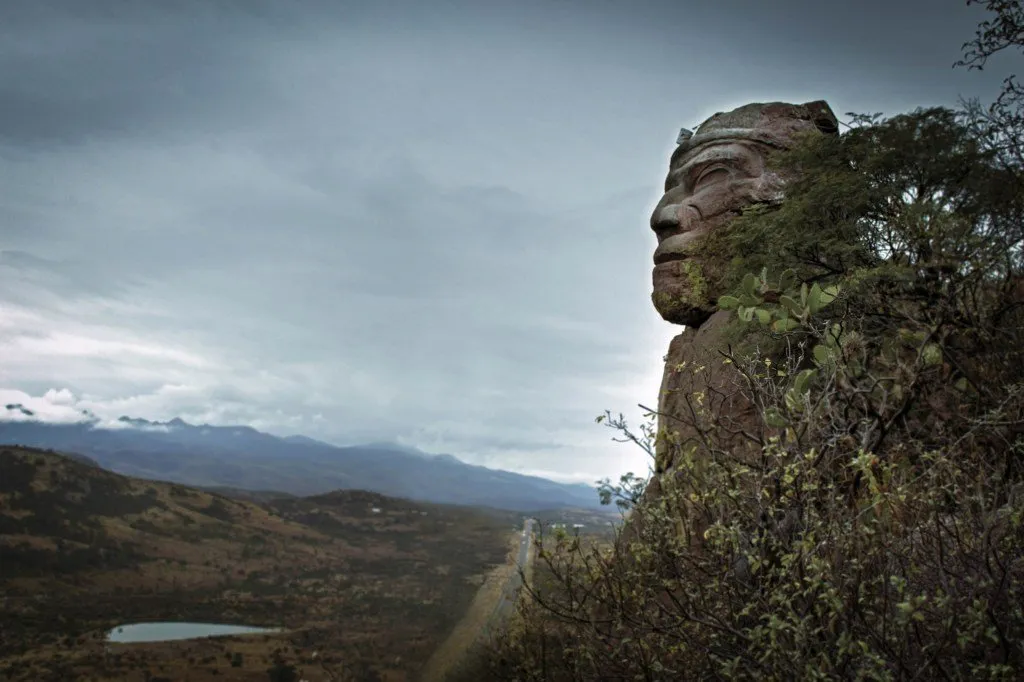
A giant stone head overlooking the valley between Aguascalientes and Calvillo
source
During the four previous eras or Suns, the Aztec believed there were four giants who supported the sky, Cuauhtemoc, Izcaqli, Izcoalt and Tenexuche. There were also four Giants assigned to this job in Norse mythology, while in Greek mythology it was only only Atlas that supported the sky on his shoulders.
Aztec legends make mention of other giants, who were believed to have founded all of the important cities of the Aztec Empire. For instance, the Giant Mixtecatl is considered the founder of the city of Mixtlan or Mixteca. The great city of Teotihuacan, also founded by giants according to myth, was built around 300 BC, roughly at the same time as the Pyramid of Choula. The city predates the Aztec Empire, but archaeologists are, however unable to say what civilization built Teotihuacan.
Historians believe that the so-called race of Giants the legends refer to as quinametzin were destroyed by a group of merchants from the coast, the Olmec-xicalanca, who arrived in Tlaxcala after 200 B.C. approximately. The Spanish historian Mariano Veytia wrote that when they occupied the banks of Atoyac, the Olmec-xicalancas found themselves surrounded by naked and disheveled giants that hunted birds and land animals and ate wild fruits and herbs. According to Veytia, the Olmec-xicalancas paid tribute to the quinametzin, until they were fed up and set up a trap to kill them. They prepared a banquet in their honor and waited for them to get drunk to kill them all. This event is supposed to have taken place sometime around 107 AD.
Interesting to note that, even if the Olmec warriors wiped out the previous civilization, they continued work on the gigantic construction sites of the pyramids.
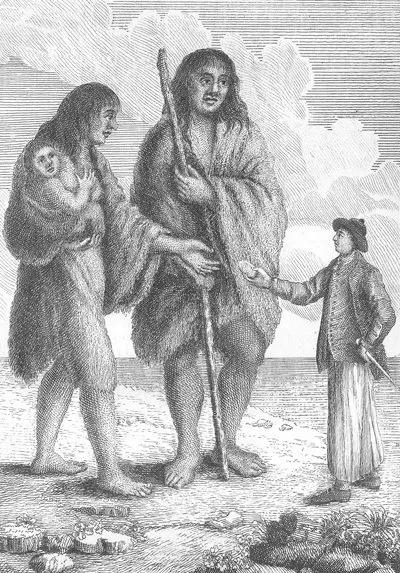
English sailor offering bread to a Patagonian woman giant (1768 drawing)
source
Some of the Spanish chronicles speak of bones belonging to giants being discovered in various places.
This is what Bernal Diaz del Castillo, a soldier under Hernan Cortes during the conquest of Mexico, wrote:
“They said their ancestors had told them that very tall men and women with huge bones had once dwelt among them, but because they were a very bad people with wicked customs they had fought against them and killed them, and those of them who remained had died off. And to show us how big these giants had been they brought us the leg bone of one, which was very thick and the height of an ordinary sized man, and that was a leg bone from the hip to the knee. I measured myself against it, and it was as tall as I am, though I am of a reasonable height.”
A certain Friar Diego Duran gave this testimony:
“It cannot be denied that there have been giants in this country. I can affirm this as an eyewitness, for I have met men of monstrous stature here. I believe that there are many in Mexico who will remember, as I do, a giant Indian who appeared in a procession of the feast of Corpus Christi. He appeared dressed in yellow silk and a halberd at his shoulder and a helmet on his head. And he was all of three feet taller than the others.”
Friar Andrés de Olmos tells us that in the palace of the first viceroy of New Spain, Antonio de Mendoza, bones of a human foot were found where each toe measured almost as long as the palm of a hand. At the same time, the friar wrote about ‘semi giants’ in his time in what is now Cuernavaca, Morelos and in Tecalli, Puebla.
However, his story regarding the remains of giant beings is contradicted by modern scholars who believe the bones were probably of animal origin, but, centuries ago, people did not know enough to distinguish between animal and human bones.
The problem of fossilized remains belonging to a giant race is still hotly debated today. We will further examine this issue in the final installment of this series.
Post authored by @ladyrebecca.
References: 1,2,3.
